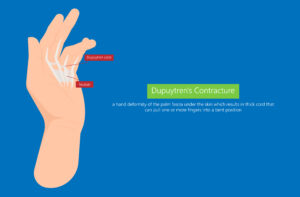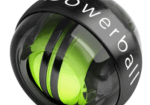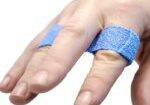Collagenase injection versus Partial fasciectomy in the treatment of Dupuytren’s contracture
Filed under Reviews
Rapid Review By: Shruti Jani
Title: Collagenase injection versus partial fasciectomy in the treatment of Dupuytren’s contracture
Reference: Tay, T. K. W., Tien, H., & Lim, E. Y. L. (2015). Comparison between Collagenase Injection and Partial Fasciectomy in the Treatment of Dupuytren’s Contracture. Hand Surgery, 20(3), 386-390. https://doi-org.mwu.idm.oclc.org/10.1142/S0218810415500288

The Skinny: “Comparison between Collagenase Injection and Partial Fasciectomy in the Treatment of Dupuytren’s Contracture” by Tay et al. (2015) is a comparative study that aims to compare collagenase injection and partial fasciectomy for patients with Dupuytren’s disease. The study aims to determine pre-treatment and post-treatment differences among patients in the net degree of passive extension, complication rate, and patient satisfaction. A total of 37 patients were recruited between August 2002 to January 2005 and were followed up for two years.
In the Weeds: A total of 37 patients with 62 metacarpophalangeal joints (MCP) and 44 proximal interphalangeal joints (PIP) were treated by a single surgeon (HT). The average age of the participants was 65 years for the collagenase injection group and 66 years for the open surgery group. Participants for the collagenase treatment were given the Xiaflex, and partial fasciectomy was done for the surgical group. The inclusion criteria included a flexion contracture in the MCP and PIP joints and a palpable pathologic cord in the hand or finger. The exclusion criteria consisted of patients unfit for surgery due to secondary reasons.
Bringing it Home: In the Collagenase group: pre-procedure contracture at MP and PIP joints averaged 38.9 and 59.4 degrees, respectively. Post-collagenase injection MP and PIP joints averaged 6.5 and 40.6 degrees, respectively. Both of these were statistically significant (p-value <0.05). In the surgery group: pre-procedure contracture at MP and PIP joints averaged 44.8 and 50.7 degrees, respectively. Post-partial fasciectomy MP and PIP joints averaged 3.9 and 6.5 degrees, respectively. Both of these were statistically significant (p-value <0.05).
Overall, the study found that the outcomes at the final follow of both treatments effectively reduce the contracture at MCP and PIP joints. Even though open fasciectomy has a greater reduction of the flexion contractures at MCP and PIP joints, most patients were satisfied with their outcome regardless of the treatment they received. The study depicts that collagenase injection is much more effective in the involved MCP joint than in the PIP joint. Collagenase procedure restored normal finger extension in most patients with an average of 83% passive extension correction in the MCP joint and 32% in the PIP joint.
Open surgery improved the degree of correction in both MCP and PIP joints. A reduction of 91% of the extension deficit was recorded in the MCP joint and 87% correction in PIP joints at the final follow-up after two years. Overall, both options remain viable options for patients.
More To Read
Article Review: Best Edema Management Techniques in Hand Therapy
Miller, L. K., Jerosch-Herold, C., & Shepstone, L. (2017). Effectiveness of edema management techniques for subacute hand edema: a systematic review. Journal of Hand Therapy, 30(4), 432-446. doi: http://dx.doi.org/10.1016/j.jht.2017.05.011 By: Ammie Ingwaldson The Skinny Edema is something therapists deal with on a daily basis and often is apart of most treatments. Managing edema can be a challenge…
Read MoreWrist Proprioception Ideas for Hand Therapy
Wrist Proprioception Intervention Ideas: By Ammie Ingwaldson Lack of wrist proprioception exercises can affect clients in the hand therapy setting with neurological and musculoskeletal conditions. Proprioception limitations are found in common conditions such as carpal tunnel syndrome, distal radius fracture, and CRPS (Valdes, Naughton & Algar, 2014). Proprioception is necessary during daily tasks to provide…
Read MoreExtensor Tendon Repair Protocol (zone 4-7): Immediate Controlled Active Motion (ICAM)
Howell, J.W., Merritt, W. H., & Robinson, S. J. (2005). Immediate Controlled Active Motion Following Zone 4–7 Extensor Tendon Repair. Journal of hand therapy: 18, 182-90. The Skinny- For years immobilization was the standard procedure following extensor tendon injuries in zones 4-7. As expected immobilization caused lengthy rehabilitation times, stiff joints, and tendon adhesions often…
Read MoreA Better De Quervain’s Tenosynovitis Test
J. F. Goubau, L. Goubau, A. Van Tongel, P. Van Hoonacker, D. Kerckhove, B. Berghs (2013).The wrist hyperflexion and abduction of the thumb (WHAT) test: a more specific and sensitive test to diagnose de Quervain tenosynovitis than the Eichhoff’s Test. J Hand Surg Eur Vol. 2014 Mar; 39(3): 286–292. Published online 2013 Jan 22. doi:…
Read MoreSign-up to Get Updates Straight to Your Inbox!
Sign up with us and we will send you regular blog posts on everything hand therapy, notices every time we upload new videos and tutorials, along with handout, protocols, and other useful information.






